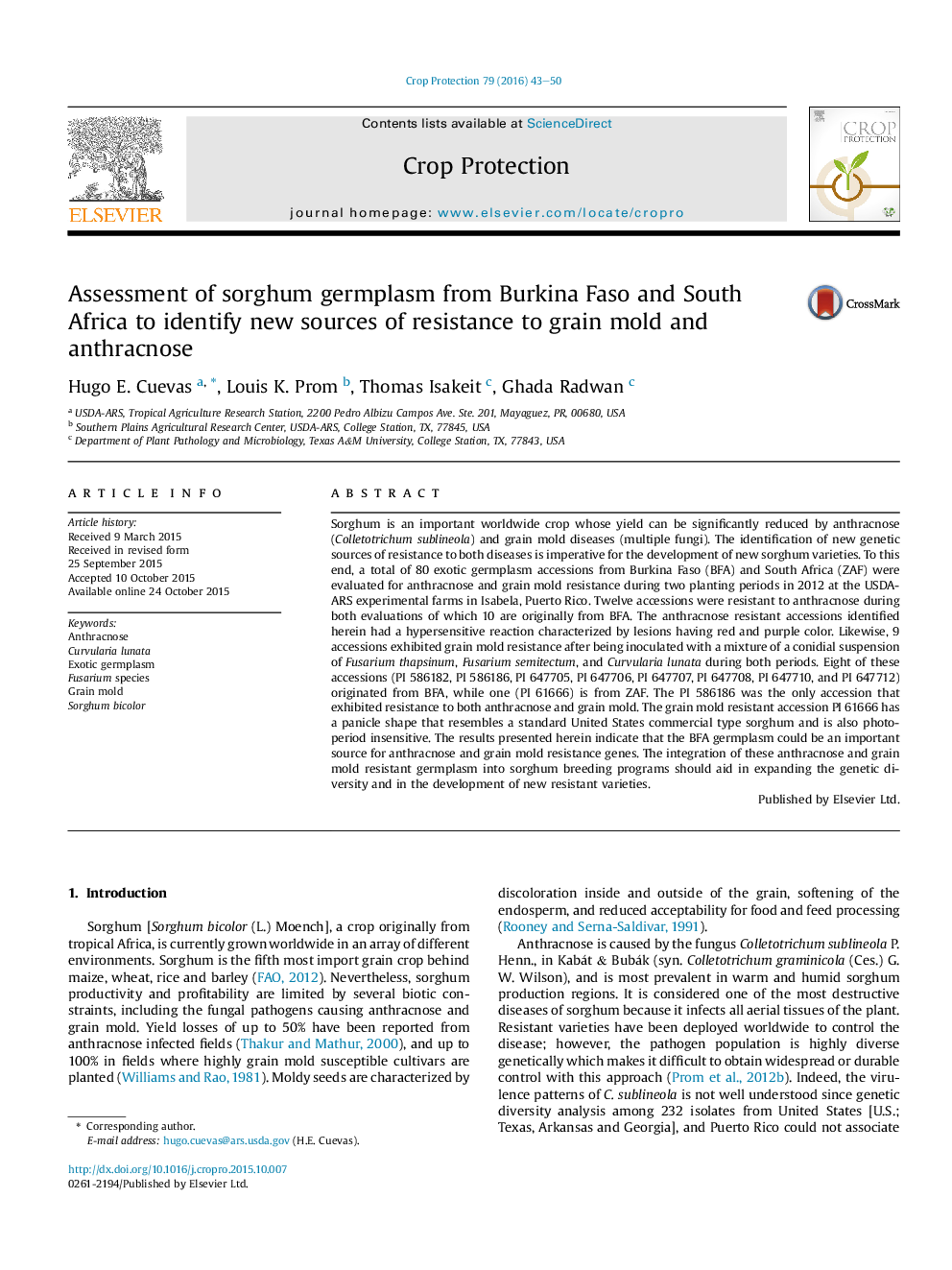| Article ID | Journal | Published Year | Pages | File Type |
|---|---|---|---|---|
| 4505611 | Crop Protection | 2016 | 8 Pages |
•Anthracnose and grain mold resistance response of 80 sorghum accessions were evaluated during two experiments.•Accessions from Burkina Faso showed higher frequency of anthracnose and grain mold resistance than South Africa accessions.•Nine accessions (8 from Burkina Faso and 1 from South Africa) exhibited grain mold resistance across repeated experiments.•New resistance germplasm should aid to expand the genetic diversity in sorghum breeding programs.
Sorghum is an important worldwide crop whose yield can be significantly reduced by anthracnose (Colletotrichum sublineola) and grain mold diseases (multiple fungi). The identification of new genetic sources of resistance to both diseases is imperative for the development of new sorghum varieties. To this end, a total of 80 exotic germplasm accessions from Burkina Faso (BFA) and South Africa (ZAF) were evaluated for anthracnose and grain mold resistance during two planting periods in 2012 at the USDA-ARS experimental farms in Isabela, Puerto Rico. Twelve accessions were resistant to anthracnose during both evaluations of which 10 are originally from BFA. The anthracnose resistant accessions identified herein had a hypersensitive reaction characterized by lesions having red and purple color. Likewise, 9 accessions exhibited grain mold resistance after being inoculated with a mixture of a conidial suspension of Fusarium thapsinum, Fusarium semitectum, and Curvularia lunata during both periods. Eight of these accessions (PI 586182, PI 586186, PI 647705, PI 647706, PI 647707, PI 647708, PI 647710, and PI 647712) originated from BFA, while one (PI 61666) is from ZAF. The PI 586186 was the only accession that exhibited resistance to both anthracnose and grain mold. The grain mold resistant accession PI 61666 has a panicle shape that resembles a standard United States commercial type sorghum and is also photoperiod insensitive. The results presented herein indicate that the BFA germplasm could be an important source for anthracnose and grain mold resistance genes. The integration of these anthracnose and grain mold resistant germplasm into sorghum breeding programs should aid in expanding the genetic diversity and in the development of new resistant varieties.
